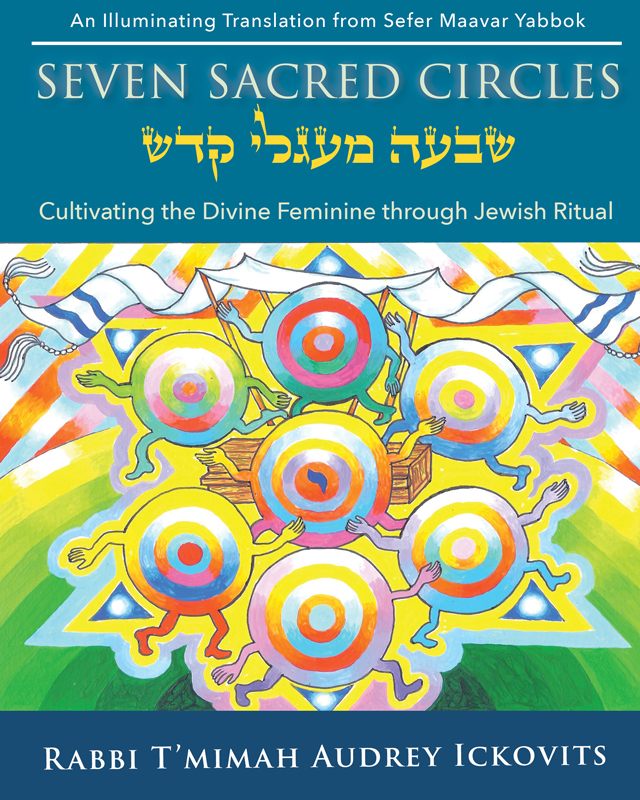Seven Sacred Circles: Cultivating The Divine Feminine Through Jewish Rituals
By Rabbi T’Mimah Audrey Ickovits
Publisher: Independently published
Many fond memories are made by encircling in Jewish tradition – beneath a ḥuppah (wedding canopy) during wedding rituals, around a Torah with a lulav and etrog on Sukkot, dancing with a Torah on Simḥat Torah, or simply being in community while such rituals are happening. Each of these are joyful moments in Jewish life.
Just as encircling accompanies some of the most important events of our Jewish lives, so too it is used to honor departure from life. This book, Seven Sacred Circles, seeks to make the Seder Ha-Hakafot (the order of encircling) accessible to those performing the sacred mitzvah of tending to the dead. It represents a meaningful and potent final act of honor to the departed.
This ancient ritual is taken from the first and most respected traditional Hebrew book on end-of-life care –Sefer Maavar Yabok– authored by Rabbi Aharon Berekhia z”l in 1626. In it, he attributes this ritual of seven hakafot around a nifteret/niftar (deceased) to Hillel ha-zaken (Hillel the Elder).[1]
This book includes two versions of Hebrew text—one adapted for use by women as well as the original text written for men. In addition, the book includes English translation and transliteration for both versions.
Seven Sacred Circles begins by drawing from Kabbalah with a step-by-step explanation of the structure behind the ritual. First, the number seven is contextualized from both secular and Jewish perspectives. Then, a light is shined on hakafot – sacred encircling with intentions for each orbit. Next, the structure and movement of the seven circles are illuminated through a sacred poem. Finally, the powerful liturgy for seven hakafot, the Seder Ha-Hakafot,is presented.
Though this book focuses on hakafot around the deceased, the structure outlined here is useful every time a ritual of seven, hakafot, or seven hakafot is done. The methodology is therefore applicable beyond this particular ritual.
Encircling offers a physical means of expressing emotion during times of celebration as well as times of mourning. If you are a ritualist, prayer leader, officiate life cycle events, provide care for those dying, or you are in love with Kabbalah, this book is for you.




